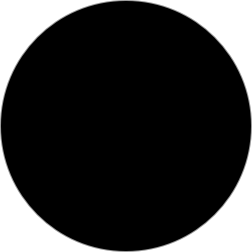Dark Patterns...
If you care about User Experience and I mean, really care about User Experience, then go and grab a brew and take 30 minutes out to watch this. I found my self standing in the middle of the office involuntarily clapping at my laptop screen by the end as though I was actually there!.. but hey that I can tell you, is a good thing...
So, ''A Dark Pattern is a type of user interface that appears to have been carefully crafted to trick users into doing things, such as buying insurance with their purchase or signing up for recurring bills.'' - Harry Brignul... this happens everywhere on the web, by some of the biggest players out there and in short, that aint right!
So, Harry has decided to do something about it, check this absolutely brilliant presentation on the subject and join the crusade to fight user deception worldwide.
Lean UX, A Jolly good read!
OK so I am only a 1/3 of the way into it right now, but I can tell you with some early confidence, that this is a fantastic book.With the opening phrase 'The biggest lie in software is phase 2' the book immediately grabbed my attention , had me grinning and then proceeded to justify and delve into how Lean UX can help.
Great comfort can be found in the founding principles of Lean UX, as the book dives right into laying down some core, concise values with great explanations around cross functional, problem focussed and co-located teams, continuous discovery, outcomes not output, permission to fail and so it goes on.
There are many books out there discussing UX approaches theories and best practice, but I would definitely recommend this one to anyone in the the areas of UX, software development, Business strategy and... well anyone really!
Core Lean UX Principles/Manifesto
- Early customer validation over releasing products with unknown end-user value
- Collaborative design over designing on an island
- Solving user problems over designing the next “cool” feature
- Measuring KPIs over undefined success metrics
- Applying appropriate tools over following a rigid plan
- Nimble design over heavy wireframes, comps or specs
More on the book Here
More on the Manifesto Here
History of User Experience - Where has it came from, and why it appeared
I have been a practitioner of UX disciplines since around 2007/2008, a time when we didn't really have the backing and support from the wider community to enforce it as UX , just sensible problem solving and design validation really. Fortunately for me, back then I worked under the guise of a very forward thinking Web development manager who viewed the world in the same way as me and between us we began weaving good UX practices such as User Insight, Business process mapping, Wire-framing, prototyping and more, into everything we could get our grubby little hands on!
7 odd years on then and it was with great pleasure I chanced upon a brilliant article from Oliver McGough charting the history of just what 'User Experience' is, where it came from and why it is here....
Over to you Oliver... Click!
Shazam... YOU Rock!
Once again I am sitting here shaking my head in ecstatic disbelief, thus, the urge to write something on the subject, so here goes… Shazam is Awesome, it has just tagged 1987 Techno classic - Fall Out - The Morning After, seriously! that is amazing and I cannot tell you how ecstatically delighted this make me!! I have only been trying to find out what that track is by playing it on an old hissy cassette to countless record store owners since the early 1990's to find out what it is… What does this have to do with UXD? Err… EVERYTHING!...
Shazam is a fantastic example of painfully simple yet immensely powerful User Experience Design, it is a strikingly great concept joining real world User needs and wants, seamlessly with technology & beautiful, simple App/UI design and interaction, the use cases for it are satisfied by shining examples of making stupid robots do clever things.
As a music consumer I genuinely think Shazam could be one of the single most powerful stand alone Apps available today.
Even when it was first released it rocked, the fundamental functionality of 'listen and identify' is second to none, seriously.. Shazam is like having my own little genre agnostic music guru dwelling permanently in my pocket, and shhh, don't tell anyone but better still, as a DJ, it makes me look like the music guru with the knowledge it empowers me with, heck i've even stood in the middle of dance floors in some of the worlds top night clubs listening to taste maker DJ's drop sets full of new beats and used Shazam to find out what they are... genius...
One of my all time favourite past times is and has been for 20 odd years, record shopping. I'm talking vinyl, I cant think of any better way to spend my saturday afternoons, then digging through the archives of historical US, NY , Detroit & Chicago House and techno rarities in the basements of independent records stores in London in a never ending quest to collect all those old classics I grew up listening to (3 thousand+ on the last count) But what to do…? If 'humm' anymore tracks to the guy behind the counter or get him to listen to tracks on my old awaia walkman, he's gonna have me arrested, right?
So will I ever find out what they are, let alone track them down to buy as vinyls...? Apparently with Shazam, the answer is becoming an ever more resounding YES with every passing day and that…. is awesome.
Bravo Shazam, keep up the incredible work!
Love Music & Great design?… go here





